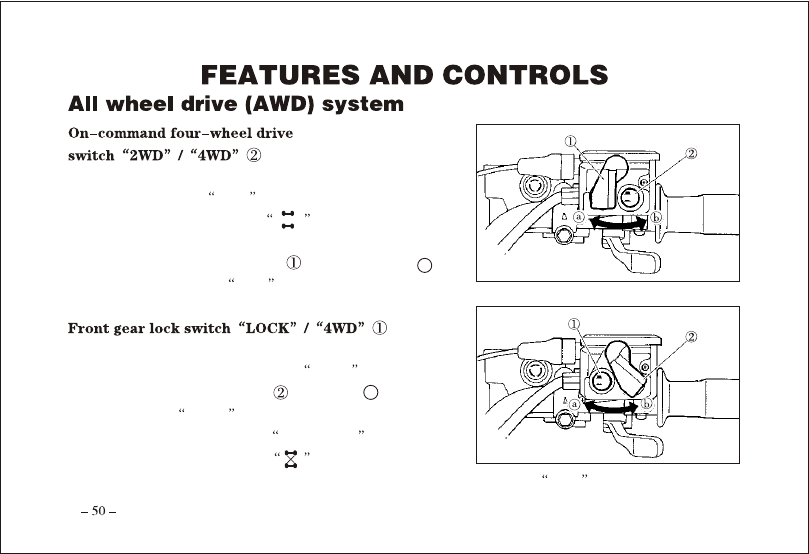CFMoto ATV HX500-S, HX500-L 4x4. Service Manual - part 3

To change from 2WD to 4WD, stop the ATV/Quadricycle, and
then set the switch to
4WD
. When the ATV/Quadricycle
is in 4WD, the 4WD indicator
will come on in the
dashboard display. To change from 4WD to 2WD, stop the
ATV/Quadricycle, be sure the lever
is set to position ,
and then set the switch to
2WD
.
To lock the front gear in 4WD, make sure the on-command
four-wheel-drive switch is set to
4WD
, stop the
ATV/Quadricycle, move the lever
to position , and then
set the switch to
LOCK
. When the front gear is locked,
the front gear lock indicator (
DIFF.LOCK
) light will
come on along with the indicator
in the dashboard display.
To release the front gear lock, stop the ATV/Quadricycle and set the switch to
4WD
.
a
b